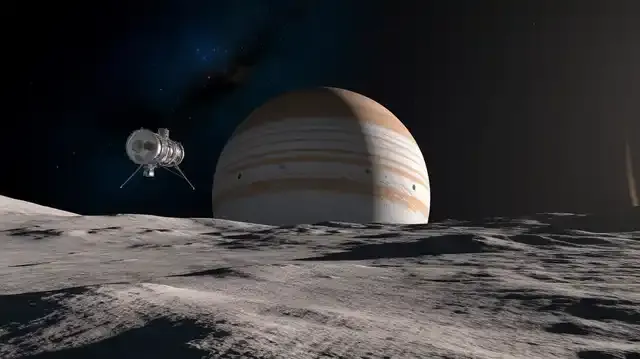Beyond Mars: Space Exploration Future
Exploring new frontiers in space beyond Mars in 2025. Discover the latest advancements, missions, and possibilities.
Space Exploration: What Lies Beyond Mars?
In 2025, the quest for understanding our universe continues with fervor. Mars, once the ultimate goal for space missions, is now only the stepping stone for more ambitious destinations. Scientists and engineers around the world push the boundaries of human knowledge and technological prowess, exploring the potential of the outer solar system and beyond.

The Moon, A Gateway to the Stars
While Mars has captivated many with its mysteries, the Moon serves as a crucial gateway for deep space exploration. This year, several countries, including the United States and China, refocusing their energy on lunar missions, aiming to establish sustainable bases. These bases are not only pivotal for scientific research but also for testing technologies that will be crucial for more prolonged space explorations.
NASA's Artemis program continues to lead, with plans to send astronauts to the Moon and utilize its resources. Through the extraction of water ice and regolith manipulation, scientists hope to produce fuel and materials needed for journeys further afield.
Beyond the Red Planet: The Next Frontiers
As we look beyond Mars, one potential goal is the exploration of Jupiter's moons, specifically Europa and Ganymede. These icy bodies intrigue scientists due to their subsurface oceans, which could harbor life. The European Space Agency’s Jupiter Icy Moons Explorer (JUICE), launched in late 2024, is on its way and represents the first dedicated mission to study these intriguing celestial bodies in hoped to gather unprecedented data about their geophysical properties and potential habitability.
Jupiter's massive gravitational influence presents a challenge, keeping mission planners on their toes as they devise strategies to orbit and adequately study these moons. The stakes are high but so too are the potential rewards. Discovering signs of life, even microbial, would be one of the greatest discoveries in human history.
Apart from Jupiter, Saturn's moon Titan also garners significant interest. With its dense atmosphere and vast lakes of liquid methane, Titan offers a unique environment that could teach us more about atmospheric and chemical processes. NASA’s Dragonfly mission is scheduled to launch later this year, promising to unveil the mysteries of this enigmatic moon.
Further afield, Neptune’s moon Triton beckons. First observed in detail by Voyager 2 in 1989, Triton’s retrograde orbit suggests it is a captured body, possibly a Kuiper Belt object. Missions aimed at Triton would face long travel times, but the potential scientific return, especially concerning capturing such objects and their characteristics, could redefine our understanding of planetary science.
While robots lead these exploratory missions, the idea of human-led journeys beyond Mars is gaining momentum. Though technological and physiological challenges abound, advancements in propulsion and life support systems are bringing the dream closer to reality.
The Interstellar Vision
As these missions unfold, the broader vision of interstellar exploration looms in the horizon. Breakthrough Starshot, an initiative founded by physicist Stephen Hawking and billionaire Yuri Milner, aims to develop a fleet of small, light-propelled nanocraft to visit our closest neighboring star system, Alpha Centauri. Although still in the concept stages, progress in materials science and laser technology suggests that projects like this could provide a viable path beyond our solar system within the next few decades.
The questions that lie beyond our solar system are immense and awe-inspiring. Could life exist on planets orbiting other stars? How do these exoplanets form and develop? The potential to address these questions drives the relentless pursuit of innovation in the realm of space exploration.
Space agencies and private sector players alike are racing towards these new frontiers, armed with sophisticated instruments and visions of expanding humanity's reach. The coming years promise to be thrilling as we step further into the cosmos, exploring not just for the sake of discovery, but for the survival and advancement of human civilization.
A great cosmic journey awaits, and as we move beyond Mars, we write a new chapter in the annals of exploration, one that may one day see us living among the stars.